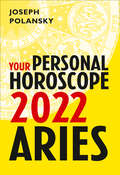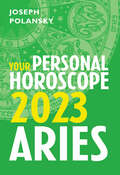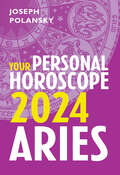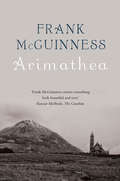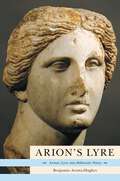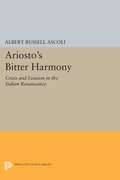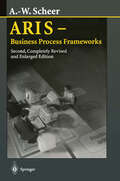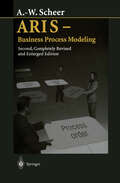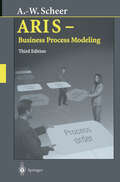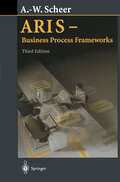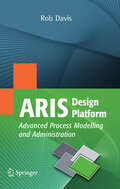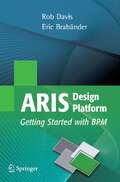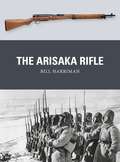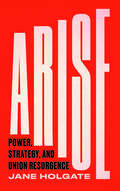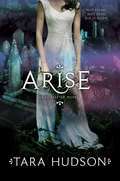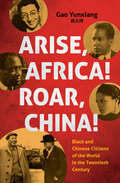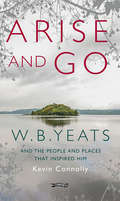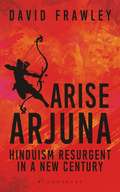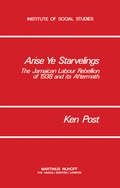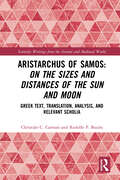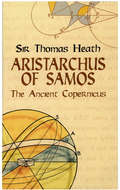- Table View
- List View
Aries 2022: Your Personal Horoscope
by Joseph PolanskyYour guide to the year 2022. This fantastic book includes month-by-month forecasts and all you need to know to find out what is in store for you in the year ahead. The only horoscope you’ll ever need.
Aries 2023: Your Personal Horoscope
by Joseph PolanskyYour complete one-volume guide to the year 2023. This fantastic and in-depth book includes month-by-month forecasts for every sign and all you need to know to find out what is in store for you in the year ahead. The only one-volume horoscope you’ll ever need.
Aries 2024: Your Personal Horoscope
by Joseph PolanskyYour complete one-volume guide to the year 2024. This fantastic and in-depth book includes month-by-month forecasts for every sign and all you need to know to find out what is in store for you in the year ahead. The only one-volume horoscope you’ll ever need.
Arimathea
by Frank McGuinness'The great spirit of Frank McGuinness radiates in this magnificent novel. Myriad voices converge on one glistening core; it is a high-wire act earthed in the deepest humanity.' Sebastian Barry It is 1950. Donegal. A land apart. Derry city is only fourteen miles away but far beyond daily reach. Into this community comes Gianni, also called Giotto at his birth. A painter from Arrezzo in Italy, he has been commissioned to paint the Stations of the Cross. The young Italian comes with his dark skin, his unusual habits, but also his solitude and his own peculiar personal history. He is a major source of fascination for the entire community. A book of close observation, sharp wit, linguistic dexterity – and of deep sympathy for ordinary, everyday humanity.
Arion's Lyre: Archaic Lyric into Hellenistic Poetry (PDF)
by Benjamin Acosta-HughesArion's Lyre examines how Hellenistic poetic culture adapted, reinterpreted, and transformed Archaic Greek lyric through a complex process of textual, cultural, and creative reception. Looking at the ways in which the poetry of Sappho, Alcaeus, Ibycus, Anacreon, and Simonides was preserved, edited, and read by Hellenistic scholars and poets, the book shows that Archaic poets often look very different in the new social, cultural, and political setting of Hellenistic Alexandria. For example, the Alexandrian Sappho evolves from the singer of Archaic Lesbos but has distinct associations and contexts, from Ptolemaic politics and Macedonian queens to the new phenomenon of the poetry book and an Alexandrian scholarship intent on preservation and codification. A study of Hellenistic poetic culture and an interpretation of some of the Archaic poets it so lovingly preserved, Arion's Lyre is also an examination of how one poetic culture reads another--and how modern readings of ancient poetry are filtered and shaped by earlier readings.
Arion's Lyre: Archaic Lyric into Hellenistic Poetry
by Benjamin Acosta-HughesArion's Lyre examines how Hellenistic poetic culture adapted, reinterpreted, and transformed Archaic Greek lyric through a complex process of textual, cultural, and creative reception. Looking at the ways in which the poetry of Sappho, Alcaeus, Ibycus, Anacreon, and Simonides was preserved, edited, and read by Hellenistic scholars and poets, the book shows that Archaic poets often look very different in the new social, cultural, and political setting of Hellenistic Alexandria. For example, the Alexandrian Sappho evolves from the singer of Archaic Lesbos but has distinct associations and contexts, from Ptolemaic politics and Macedonian queens to the new phenomenon of the poetry book and an Alexandrian scholarship intent on preservation and codification. A study of Hellenistic poetic culture and an interpretation of some of the Archaic poets it so lovingly preserved, Arion's Lyre is also an examination of how one poetic culture reads another--and how modern readings of ancient poetry are filtered and shaped by earlier readings.
Ariosto's Bitter Harmony: Crisis and Evasion in the Italian Renaissance (PDF)
by Albert Russell AscoliFocusing on the fundamental Ariostan pairing of education and madness, with all its implications for poetry, Professor Ascoli generates a global reading of the greatest literary work of the Italian Renaissance.Originally published in 1987.The Princeton Legacy Library uses the latest print-on-demand technology to again make available previously out-of-print books from the distinguished backlist of Princeton University Press. These editions preserve the original texts of these important books while presenting them in durable paperback and hardcover editions. The goal of the Princeton Legacy Library is to vastly increase access to the rich scholarly heritage found in the thousands of books published by Princeton University Press since its founding in 1905.
ARIS — Business Process Frameworks
by August-Wilhelm ScheerARIS (Architecture of Integrated Information Systems) is a unique and internationally renowned method for optimizing business processes and implementing application systems. This book enhances the proven ARIS concept by describing product flows and explaining how to classify modern software concepts. The importance of the link between business process organization and strategic management is stressed. Bridging the gap between the different approaches in business theory and information technology, the ARIS concept provides a full-circle approach-from the organizational design of business processes to IT implementation. With an emphasis on SAP R/3, real-world examples of standard software solutions illustrate these business process frameworks.
ARIS — Business Process Modeling
by August-Wilhelm ScheerThis book describes in detail how ARIS methods model and identify business processes by means of the UML (Unified Modeling Language), leading to an information model that serves as the basis for a systematic and intelligent development of application systems. Multiple real-world examples using SAP R/3 illustrate aspects of business process modeling including methods of knowledge management, implementation of workflow systems and standard software solutions, and the deployment of ARIS methods.
ARIS — Business Process Modeling
by August-Wilhelm ScheerThis book describes in detail how ARIS methods model and identify business processes by means of the UML (Unified Modeling Language), leading to an information model that serves as the basis for a systematic and intelligent development of application systems. Multiple real-world examples using SAP R/3 illustrate aspects of business process modeling including methods of knowledge management, implementation of workflow systems and standard software solutions, and the deployment of ARIS methods.
ARIS - Business Process Frameworks
by August-Wilhelm ScheerARIS (Architecture of Integrated Information Systems) is a unique and internationally renowned method for optimizing business processes and implementing application systems. This book enhances the proven ARIS concept by describing product flows and explaining how to classify modern software concepts. The importance of the link between business process organization and strategic management is stressed. Bridging the gap between the different approaches in business theory and information technology, the ARIS concept provides a full-circle approach-from the organizational design of business processes to IT implementation. With an emphasis on SAP R/3, real-world examples of standard software solutions illustrate these business process frameworks.
ARIS Design Platform: Advanced Process Modelling and Administration
by Rob DavisFollowing on from Rob Davis’ successful introductory book, ARIS Design Platform: Getting Started with BPM, Rob now covers in detail some of the more advanced concepts of using ARIS Business Architect. This is a practical ‘how-to’ guide and contains tips, techniques and short cuts gained from practical experience and explains clearly how to use ARIS and why ARIS is a powerful tool for process modeling. Advanced concepts such as the following are presented in this reader-friendly and concise guide: - Matrix editor, - Find and query, - Model generation, - Method filters and method changes, - Templates and fonts, - Reports and semantic checks, - Macros, - Transformations, - Database administration, - User management. This easy-to-follow advanced text is a must have guide and reference for all users who want to increase their ARIS skills, and for those who need to undertake advanced model and database management.
ARIS Design Platform: Getting Started with BPM
by Rob Davis Eric BrabanderThis practical "how-to" guide to both using the ARIS Design Platform and how to use it to create real business models, follows Rob Davis’ hugely successful Business Process Modelling with ARIS (Springer 2001). This second volume describes the new release of ARIS 7 Design Platform including ARIS Business Architect and ARIS Business Designer. Containing tips, techniques and short cuts gained from practical experience, this book show how to use ARIS in an easy way, supporting smart methods and smart models, and displays how ARIS can be used as a powerful tool for BPM. This book is a must-have guide and reference for all existing and new users of ARIS.
The Arisaka Rifle (Weapon)
by Bill HarrimanEntering service in 1897, the Arisaka family of bolt-action rifles armed Japanese troops and others through two world wars and many other conflicts, including the Russo-Japanese War of 1904–05. Issued in long and short versions – the latter for cavalry and specialists – the Type 30 was the first main Arisaka model, arming Imperial Japan's forces during the Russo-Japanese War, though after the war it was refined into the Type 38, which would still be in use in 1945. The main Arisaka rifle of World War II though was the Type 99. Lighter and more rugged than the US M1903 Springfield rifle it would face in the initial battles in the Pacific, it was produced in four main variants, including a sniping model and a take-down parachutist's rifle. Featuring full-colour artwork as well as archive and close-up photographs, this is the absorbing story of the rifles arming Imperial Japan's forces, from the trenches of Mukden in 1905 to the beaches of Okinawa 40 years later.
The Arisaka Rifle (Weapon #70)
by Bill HarrimanEntering service in 1897, the Arisaka family of bolt-action rifles armed Japanese troops and others through two world wars and many other conflicts, including the Russo-Japanese War of 1904–05. Issued in long and short versions – the latter for cavalry and specialists – the Type 30 was the first main Arisaka model, arming Imperial Japan's forces during the Russo-Japanese War, though after the war it was refined into the Type 38, which would still be in use in 1945. The main Arisaka rifle of World War II though was the Type 99. Lighter and more rugged than the US M1903 Springfield rifle it would face in the initial battles in the Pacific, it was produced in four main variants, including a sniping model and a take-down parachutist's rifle. Featuring full-colour artwork as well as archive and close-up photographs, this is the absorbing story of the rifles arming Imperial Japan's forces, from the trenches of Mukden in 1905 to the beaches of Okinawa 40 years later.
Arise: Power, Strategy and Union Resurgence (Wildcat)
by Jane Holgate'Jane Holgate is a brilliant thinker' - Jane McAlevey In Arise, Jane Holgate argues that unions must revisit their understanding of power in order to regain influence and confront capital. Drawing on two decades of research and organising experience, Holgate examines the structural inertia of today’s unions from a range of perspectives: from strategic choice, leadership and union democracy to politics, tactics and the agency afforded to rank-and-file members. In the midst of a neoliberal era of economic crisis and political upheaval, the labour movement stands at a crossroads. Union membership is on the rise, but the ‘turn to organising’ has largely failed to translate into meaningful gains for workers. There is considerable discussion about the lack of collectivism among workers due to casualisation, gig work and precarity, yet these conditions were standard in the UK when workers built the foundations of the 19th-century trade union movement. Drawing on history and case studies of unions developing and using power effectively, this book offers strategies for moving beyond the pessimism that prevails in much of today’s union movement. By placing power analysis back at the heart of workers' struggle, Holgate shows us that transformational change is not only possible, but within reach.
Arise: Power, Strategy and Union Resurgence (Wildcat)
by Jane Holgate'Jane Holgate is a brilliant thinker' - Jane McAlevey In Arise, Jane Holgate argues that unions must revisit their understanding of power in order to regain influence and confront capital. Drawing on two decades of research and organising experience, Holgate examines the structural inertia of today’s unions from a range of perspectives: from strategic choice, leadership and union democracy to politics, tactics and the agency afforded to rank-and-file members. In the midst of a neoliberal era of economic crisis and political upheaval, the labour movement stands at a crossroads. Union membership is on the rise, but the ‘turn to organising’ has largely failed to translate into meaningful gains for workers. There is considerable discussion about the lack of collectivism among workers due to casualisation, gig work and precarity, yet these conditions were standard in the UK when workers built the foundations of the 19th-century trade union movement. Drawing on history and case studies of unions developing and using power effectively, this book offers strategies for moving beyond the pessimism that prevails in much of today’s union movement. By placing power analysis back at the heart of workers' struggle, Holgate shows us that transformational change is not only possible, but within reach.
Arise (Hereafter Trilogy Ser. #2)
by Tara HudsonA stranded spirit, and a love story that crosses the divide between the living and the dead…
Arise Africa, Roar China: Black and Chinese Citizens of the World in the Twentieth Century (The John Hope Franklin Series in African American History and Culture)
by Yunxiang GaoThis book explores the close relationships between three of the most famous twentieth-century African Americans, W. E. B. Du Bois, Paul Robeson, and Langston Hughes, and their little-known Chinese allies during World War II and the Cold War—journalist, musician, and Christian activist Liu Liangmo, and Sino-Caribbean dancer-choreographer Sylvia Si-lan Chen. Charting a new path in the study of Sino-American relations, Gao Yunxiang foregrounds African Americans, combining the study of Black internationalism and the experiences of Chinese Americans with a transpacific narrative and an understanding of the global remaking of China's modern popular culture and politics. Gao reveals earlier and more widespread interactions between Chinese and African American leftists than accounts of the familiar alliance between the Black radicals and the Maoist Chinese would have us believe. The book's multilingual approach draws from massive yet rarely used archival streams in China and in Chinatowns and elsewhere in the United States. These materials allow Gao to retell the well-known stories of Du Bois, Robeson, and Hughes alongside the sagas of Liu and Chen in a work that will transform and redefine Afro-Asia studies.
Arise And Go: W.B. Yeats and the people and places that inspired him
by Kevin ConnollyThe idea of place runs like a river through the life and works of the poet and playwright W.B. Yeats. This book focuses on his time in Dublin, London, Sligo and elsewhere in the west of Ireland, embracing the homes, landscapes and people that impacted his life and stimulated his vast body of work. Meet the poet’s father, the struggling artist John Butler Yeats; his mother Susan, the well-to-do Sligo girl who had no choice but to follow her husband’s path; his five siblings: Lily and Lolly, guiding lights in the Irish Arts and Crafts movement; Jack, the renowned painter; and Bobbie and Jane Grace, who died in infancy. Meet William Morris, John O’Leary, Katharine Tynan, George Moore, Oscar Wilde, Lady Gregory, Douglas Hyde, George Hyde-Lees, and, of course, Maud Gonne, as well as countless others who helped weave the cloth of Yeats’s poetic gift.
Arise Arjuna: Hinduism Resurgent in a New Century
by David FrawleyIndia faces a modern Kurukshetra as the forces of dharma and adharma clash again in a conflict that will determine the future of the nation. On one side are the forces of economic growth, cultural revival and a renewed vision of the country in harmony with its yogic values. On the other side are forces of religious prejudices, baseless propaganda, social division and materialistic political ideologies.Mere retreat, passivity or compromise cannot overcome past adversaries or the new dangers that are lurking in our conflicted media age, its invasive technology and the disruptive clash of cultures. India needs to benefit from the opportunities of the dawning knowledge era where its dharmic traditions can prosper once again. A new spiritual warrior, equipped with yogic power and Vedantic insights, is necessary like Arjuna was under the guidance of Sri Krishna. This book is a call for new Arjunas to emerge among us, learn the skills of the information age and uphold the cause of dharma with discernment and dedication on both intellectual and spiritual levels.Only through this can we awaken our spirit to uplift our world at this critical juncture of human history when the very foundations of life are threatened.
Arise Ye Starvelings: The Jamaican Labour Rebellion of 1938 and its Aftermath (Institute of Social Studies Series on Development of Societies #3)
by K. PostAristarchus of Samos: Greek Text, Translation, Analysis, and Relevant Scholia (Scientific Writings from the Ancient and Medieval World)
by Christián C. Carman Rodolfo P. BuzónThis book offers the Greek text and an English translation of Aristarchus of Samos’s On the Sizes and Distances of the Sun and Moon, accompanied by a full introduction, detailed commentary, and relevant scholia. Aristarchus of Samos was active in the third century BC. He was one of the first Greek astronomers to apply geometry to the solution of astronomical problems as we can see in his only extant text, On the Sizes and Distances of the Sun and Moon. Alongside the Greek text and new English translation, the book offers readers the Latin text and English translation of Commandino’s notes on the text. Readers will also benefit from a comprehensive introductory study explaining the value of Aristarchus’s calculations and methodology throughout history, as well as detailed analyses of each part of the treatise. This volume will be of interest to students and scholars working on ancient science and astronomy and the general reader interested in the history of science.
Aristarchus of Samos: The Ancient Copernicus
by Thomas Heath"A most welcome addition to the literature of astronomical history." -- Nature"A most important contribution to the early history of Greek thought and a notable monument of English scholarship." -- Journal of Hellenic StudiesThis classic work traces Aristarchus of Samos's anticipation by two millennia of Copernicus's revolutionary theory of the orbital motion of the earth. Heath's history of astronomy ranges from Homer and Hesiod to Aristarchus and includes quotes from numerous thinkers, compilers, and scholasticists from Thales and Anaximander through Pythagoras, Plato, Aristotle, and Heraclides. 34 figures.
